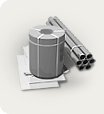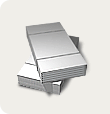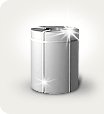A steel pipe is a long, hollow pipe that is used for a wide variety of purposes. They are produced in two different ways, resulting in either welded or seamless pipe, for more details see https://risteil.com /chernyj-metal/truby-stalnye.html . In both methods, the steel is first cast into a more workable original shape.
Types of steel pipes
The three most common types of steel pipes are as follows:
Electric-welded steel pipe
Electric welding of pipes is carried out by rounding the steel sheet and longitudinal connection of the pipe with a weld seam. It is the most popular and economical way to produce steel pipes.
During the development of welded pipes, a need arose for seamless metal pipes. Seamless pipes are those that do not have a weld seam, and according to the production method, a seamless pipe is:
Hot rolled steel pipe
Cold rolled steel pipe
Use of steel pipes
To say that the use of steel pipes is mainly related to the transport of liquids would be an oversight if we did not briefly recognize the importance of the steel pipe as a structural element. Because it is hollow and has a relatively low strength-to-weight ratio, steel pipes can be structural elements that are designed by engineers and architects for many applications. They can be used on a large scale, for example, as a support for massive billboards. They can also be used on a small scale for everyday household needs. Steel pipe is often used as a casing to protect water pipes, sewers, or other load-bearing pipes.
Seamless pipes are usually lighter and have thinner walls. They are used, for example, for bicycles and for transporting liquids. Seamed pipes are heavier and stiffer. They have better consistency and are usually more direct. They are used for such purposes as gas transportation, electrical wiring, etc. As a rule, they are used in cases where the pipe is not subjected to a high degree of stress.






